Address
304 North Cardinal
St. Dorchester Center, MA 02124
Work Hours
Monday to Friday: 7AM - 7PM
Weekend: 10AM - 5PM
Address
304 North Cardinal
St. Dorchester Center, MA 02124
Work Hours
Monday to Friday: 7AM - 7PM
Weekend: 10AM - 5PM
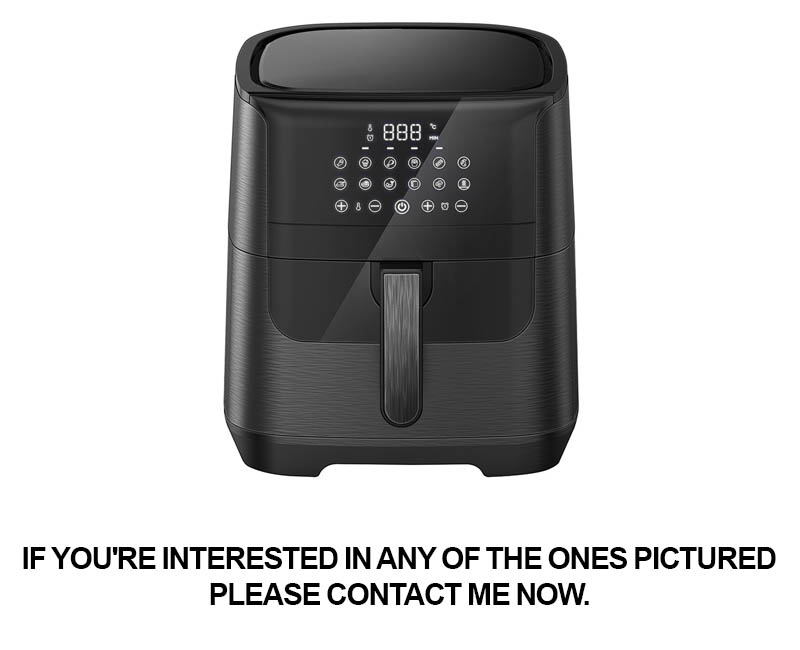
In the realm of kitchen appliances, the juicer has long been a staple, but it’s the innovative designs and cutting-edge technology of Original Design Manufacturing (ODM) juicers that are redefining the juicing experience. These appliances are not just squeezing out fresh juice; they’re a blend of form and function, appealing to the modern consumer’s desire for both style and substance. Let’s delve into the world of ODM juicers and explore how they’re reshaping the market.
Revolutionizing the Juicing Experience: The Power of ODM Juicer Design Service
In the realm of kitchen appliances, juicers have long been a staple for health-conscious consumers and culinary enthusiasts alike. However, the traditional juicer market has been ripe for disruption, and the emergence of Original Design Manufacturing (ODM) juicer design services has breathed new life into the category. These innovative design services are not just crafting new juicers; they are reshaping the entire juicing experience.
The process begins with a blank canvas, where ODM teams delve into the latest trends, technological advancements, and consumer insights to conceptualize juicers that stand out from the crowd. These aren’t just appliances; they are experiences, designed to enhance the juicing process and make every sip a flavorful journey.
One of the key advantages of opting for an ODM juicer design service is the ability to tailor the design to specific market needs. Whether it’s targeting the environmentally conscious consumer with a sleek, BPA-free model or appealing to the tech-savvy crowd with a juicer that syncs with a smart kitchen app, ODM services ensure that every design is a reflection of its intended audience.
The innovation in ODM juicers is not just skin-deep; it permeates every aspect of the product. From the ergonomically designed handle that provides a comfortable grip to the advanced filtering system that extracts every drop of juice, these appliances are thoughtfully crafted to simplify the juicing experience. The sleek and modern aesthetics don’t just make a statement; they invite users to engage with their juicer as a part of their daily lifestyle.
The integration of technology into juicers is another area where ODM design services excel. High-tech features like self-cleaning functions, real-time nutrient tracking, and automated cleaning cycles not only add convenience but also set new standards in usability. These innovations are not just for show; they enhance the overall performance and longevity of the appliance.
In the realm of materials, ODM juicer design services are leading the charge with eco-friendly and sustainable options. From biodegradable components to energy-efficient motors, these designers are pushing the boundaries of what is possible while remaining committed to the planet’s well-being.
Market insights play a pivotal role in the design process. ODM teams are constantly analyzing data, trends, and consumer behavior to anticipate the next big thing in the juicing world. This foresight ensures that every juicer design is not only contemporary but also forward-thinking, ready to meet the demands of the future.
For consumers, the benefits of choosing an ODM juicer are clear. Not only do they get a product that is uniquely theirs, but they also enjoy a level of quality and innovation that surpasses the mainstream market. The customer-centric approach means that every aspect of the juicer, from its usability to its aesthetics, is carefully considered to provide the best possible experience.
Quality assurance is non-negotiable in the ODM process. These services often involve rigorous testing to ensure that every juicer meets stringent standards for performance, safety, and reliability. This commitment to quality means that consumers can trust that their investment will yield years of juice extraction joy.
Success stories in the ODM juicer design space are as diverse as the juices themselves. From compact models perfect for small kitchens to commercial-grade units that can handle high-volume juice bars, these designs have made their mark across various industries and consumer segments.
Looking ahead, the future of juicing is bright, and ODM juicer design services are at the forefront of this evolution. Trends like personalized juicing experiences, integrated health and wellness tracking, and modular design components are shaping the next generation of juicers. The possibilities are virtually limitless, and the power of ODM design services is driving this innovation.
In conclusion, the ODM juicer design service is not just a service; it’s a force of innovation that is reshaping the juicing landscape. By merging creativity, technology, and consumer insight, these services are ensuring that every juicer not only works but also delights, making the juicing experience truly revolutionary.

In the bustling heart of kitchen appliances, the humble juicer has transformed into a symbol of innovation and functionality. It’s not just a tool for extracting fresh juice from fruits and vegetables; it’s a testament to the power of design and technology. The ODM (Original Design Manufacturer) juicer design service has become the secret sauce behind some of the most sought-after juicing machines on the market. These machines are not just kitchen gadgets; they are sleek, efficient, and tailored to meet the ever-evolving demands of consumers.
The world of juicing has seen a surge in creativity, with manufacturers pushing the boundaries of what a juicer can be. From compact, space-saving models to high-powered centrifugal juicers, each design is a nod to the latest trends and consumer preferences. The ODM juicer design service has been instrumental in this evolution, offering a unique blend of form and function that resonates with today’s health-conscious consumers.
Gone are the days when juicers were just another appliance on the countertop. Modern juicers are now sleek, modern pieces of art that enhance the aesthetics of any kitchen. The design service understands that the look and feel of a juicer can greatly influence a consumer’s purchase decision. By integrating cutting-edge materials and innovative features, these designers are creating appliances that not only serve a purpose but also inspire admiration.
The process of designing a juicer through an ODM service is a meticulous one. It starts with extensive research into consumer needs, market trends, and technological advancements. Designers delve into the nuances of juicing technology, exploring how different types of juicers work and what sets them apart. This research phase is crucial, as it forms the foundation for creating a product that stands out in a crowded marketplace.
Once the research is complete, the creative process begins. Designers sketch out ideas, often collaborating with engineers and chefs to ensure that their concepts are not only visually appealing but also practical. They experiment with shapes, sizes, and materials, constantly asking themselves how they can make the juicing experience more enjoyable and less cumbersome. The result is a product that not only delivers fresh juice but also enhances the overall cooking experience.
Innovation in juicer design is not limited to aesthetics. Functionality is key, and the ODM design service excels in creating machines that are user-friendly and efficient. From one-touch operation to intuitive interfaces, these juicers are designed to make the juicing process as simple as possible. Features like easy-to-clean components, adjustable settings, and durable construction are all part of the design philosophy that aims to provide a seamless and hassle-free juicing experience.
The market for juicers has become incredibly competitive, with consumers gravitating towards brands that offer something unique. The ODM juicer design service has become a cornerstone in this competitive landscape, enabling manufacturers to differentiate their products from the rest. By offering customized design solutions, the service ensures that each juicer is a reflection of the brand’s identity and values.
Moreover, the design service keeps a pulse on the market, staying ahead of emerging trends. Sustainability, for instance, is a growing concern, and designers are responding by creating juicers that are not only eco-friendly but also efficient in their use of resources. This forward-thinking approach is resonating with environmentally conscious consumers, who are increasingly seeking appliances that align with their values.
Another trend that the ODM juicer design service is capitalizing on is the integration of smart technology. Smart juicers with connectivity features are becoming more common, allowing users to control and monitor their appliances through smartphones or tablets. This integration of technology not only adds convenience but also brings a new level of interaction to the juicing process.
In the realm of juicer design, the ODM service has become a driving force behind the industry’s continuous evolution. It’s a service that not only produces visually stunning appliances but also enhances the user experience through thoughtful design. The juicers that emerge from this process are not just tools for making juice; they are gateways to healthier lifestyles and a more sophisticated approach to kitchen appliances.
As the demand for high-quality, innovative juicers continues to rise, the ODM juicer design service remains a pivotal player. By merging design with cutting-edge technology, these services are setting new standards in the kitchen appliance industry. It’s clear that the juice of innovation is flowing strong, and the future of juicers looks as vibrant and varied as the fresh produce they help bring to life.
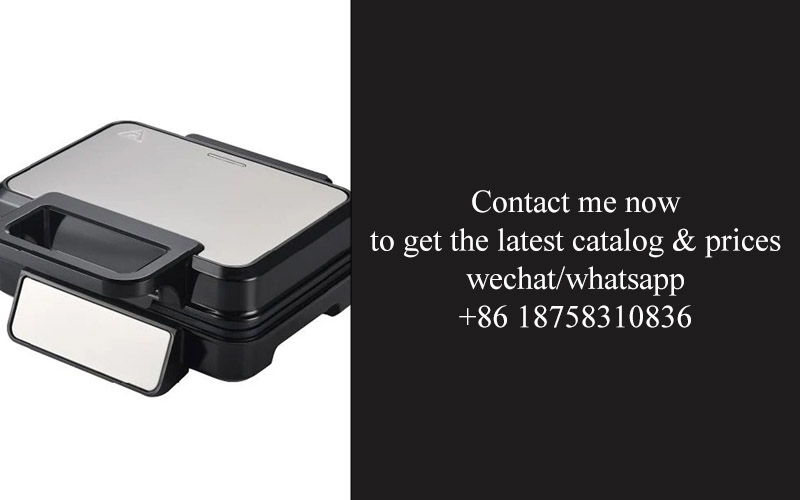
In the ever-evolving world of kitchen appliances, the term ODM stands as a beacon of innovation and customization. ODM, or Original Design Manufacturer, refers to a business model where a company designs and develops products that are then manufactured by another entity. This collaborative approach has become a cornerstone in the kitchen appliance sector, offering a multitude of benefits that cater to both manufacturers and consumers alike.
The essence of ODM lies in the fusion of creative design and efficient production. By leveraging the expertise of design firms, companies can push the boundaries of what’s possible in kitchen appliances. This isn’t just about creating a product that works; it’s about crafting a product that resonates with the consumer’s lifestyle and aesthetic preferences.
One of the key advantages of ODM in the kitchen appliance sector is the ability to bring unique and innovative products to market. Designers can explore cutting-edge technologies and materials, resulting in appliances that not only perform well but also stand out visually. Whether it’s a sleek, modern refrigerator or a compact, efficient blender, ODM allows for a wide array of designs that can cater to different market segments.
Another critical aspect of ODM is the flexibility it offers in terms of customization. Companies can tailor their products to meet specific customer needs, from size and color options to unique features that address specific challenges or preferences. This level of personalization is often unattainable through traditional manufacturing processes, making ODM a valuable tool for companies looking to differentiate themselves in a crowded marketplace.
In the realm of juicers, for instance, ODM has led to the creation of appliances that are not only functional but also aesthetically pleasing. From compact, countertop models to powerful, commercial-grade machines, the variety and innovation in juicer designs have expanded significantly. This is due in part to the collaborative nature of ODM, where designers and manufacturers work hand-in-hand to ensure that every detail is perfect.
The process of ODM in the kitchen appliance sector typically involves several stages. First, the design firm conducts market research to understand current trends and consumer demands. This research informs the initial concept phase, where designers brainstorm and sketch potential product ideas. Once a concept is selected, the design is refined through a series of prototypes, each iteration bringing the product closer to its final form.
Throughout this process, communication between the design firm and the manufacturing partner is crucial. The design firm needs to ensure that their vision is feasible from a production standpoint, while the manufacturer must convey any technical limitations or considerations. This back-and-forth dialogue is what ultimately leads to a product that is both beautiful and practical.
From a business perspective, ODM can be a strategic advantage. It allows companies to enter new markets with products that are already designed and tested, reducing the time and risk associated with product development. Moreover, by outsourcing the design process, companies can focus on their core competencies, such as marketing and distribution.
Consumers benefit from ODM in the kitchen appliance sector as well. The result is a wider range of choices that cater to different budgets, lifestyles, and tastes. For example, a family might opt for a multi-function blender that can handle everything from smoothies to dough, while a health-conscious individual might seek out a high-end juicer that offers maximum nutrient extraction.
The rise of e-commerce has also played a significant role in the growth of ODM in the kitchen appliance sector. Online platforms have made it easier for consumers to discover and purchase unique products, many of which are designed through ODM partnerships. This direct-to-consumer approach not only fosters a closer relationship between the customer and the product but also allows for more immediate feedback, which can be invaluable in the design process.
In conclusion, ODM in the kitchen appliance sector is more than just a business model; it’s a catalyst for innovation and customization. It empowers companies to create products that are not only functional but also stylish and tailored to the needs of the modern consumer. As the industry continues to evolve, the role of ODM is likely to become even more integral, driving the next wave of creativity and efficiency in kitchen appliances.
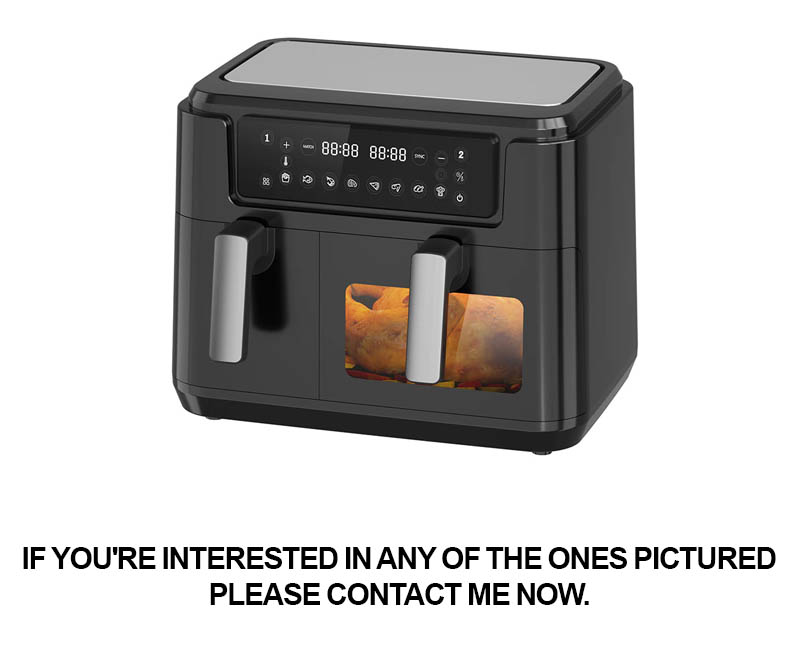
In the bustling world of kitchen appliances, the juicer stands as a symbol of freshness and vitality. However, not all juicers are created equal. This is where the Juicer Design Service steps in, acting as a gateway to unique and functional appliances that not only enhance the juicing experience but also cater to the evolving demands of consumers.
The design service for juicers is a specialized niche that involves a blend of artistic flair and technical expertise. It’s a process that begins with understanding the essence of juicing—its purpose, the needs of the users, and the technological advancements that can elevate the product from good to great. Here’s a deeper look into what this design service entails.
Innovation in Form and FunctionThe design of a juicer isn’t just about aesthetics; it’s a harmonious blend of form and function. The design service focuses on creating juicers that not only look sleek and modern but also perform efficiently. From the shape of the feeding chute to the design of the blades, every detail is meticulously crafted to ensure that the juicer can extract the maximum amount of juice from fruits and vegetables with minimal effort.
Tailored to Individual PreferencesConsumers today are more discerning than ever. They seek appliances that not only meet their needs but also reflect their personal style. The Juicer Design Service takes this into account, offering customization options that allow customers to choose from various colors, materials, and even additional features like built-in filters or digital displays. This personalization ensures that the juicer is not just a tool but a statement piece in the kitchen.
User Experience at the CoreThe design process for juicers is user-centric. It involves extensive research to understand how individuals interact with their appliances, what they find convenient, and what challenges they face. This user experience (UX) focus results in juicers that are intuitive to use, with easy-to-read controls, quiet motors, and user-friendly interfaces. The goal is to make the juicing process as enjoyable and effortless as possible.
Material Selection and DurabilityA well-designed juicer is built to last. The design service pays close attention to the materials used, ensuring that they are not only visually appealing but also durable and safe. From the stainless steel components that resist corrosion to the BPA-free plastics that ensure a healthy juicing experience, every material is chosen for its long-term performance and safety.
Integration of TechnologyThe Juicer Design Service also integrates cutting-edge technology into its designs. This might include smart features that allow juicers to be controlled via an app, or advanced juicing mechanisms that can handle a wider variety of ingredients. By staying ahead of the curve, these designs ensure that the juicer remains a relevant and innovative appliance in the ever-evolving kitchen landscape.
Sustainability and Eco-Friendly SolutionsAs environmental concerns grow, the design service takes sustainability into consideration. This can mean using energy-efficient motors, designing products that are easy to recycle, or even creating juicers that are made from recycled materials. These eco-friendly solutions not only appeal to the environmentally conscious consumer but also align with the broader global movement towards sustainability.
Global Trends and Cultural InfluencesThe design of juicers is also influenced by global trends and cultural preferences. The design service keeps an eye on what’s popular in different markets around the world, incorporating these trends into their designs. Whether it’s the sleek minimalism of Scandinavian design or the vibrant colors of Mediterranean kitchens, the service ensures that the juicer appeals to a diverse range of consumers.
Marketing and BrandingA well-designed juicer is only as good as its marketability. The design service also includes elements of marketing and branding, ensuring that the juicer not only performs well but also stands out on the shelves. This includes creating a unique brand identity, packaging that reflects the product’s quality, and marketing materials that tell a compelling story about the juicer’s features and benefits.
In conclusion, the Juicer Design Service is more than just a service; it’s a commitment to innovation, user satisfaction, and sustainable practices. By focusing on the intricate details of design, material selection, user experience, and market trends, this service is a key player in the evolution of the kitchen appliance industry, bringing to life juicers that are not just tools but experiences.
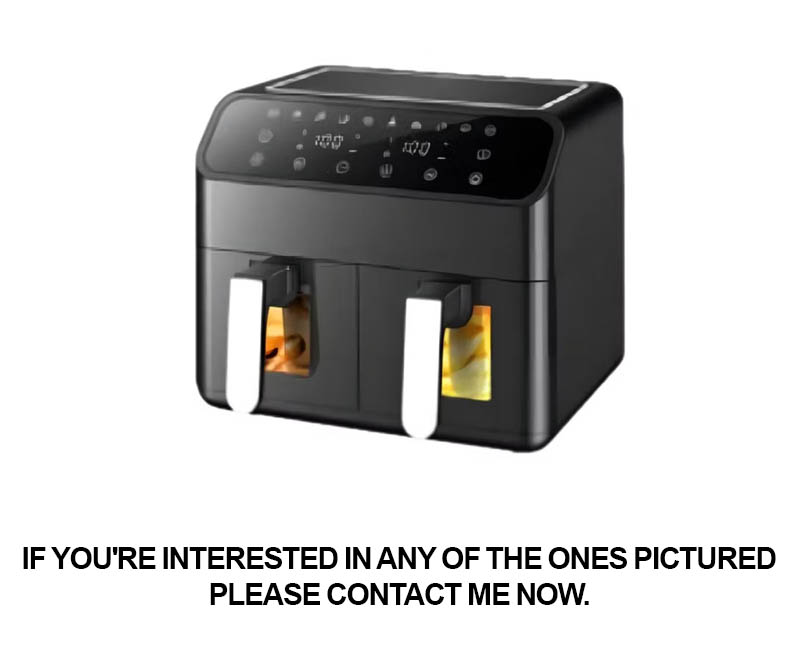
In the realm of kitchen appliances, the juicer has long been a staple, but it’s the innovative designs that have truly transformed the juicing experience. ODM (Original Design Manufacturer) juicers are at the forefront of this revolution, blending form and function in ways that appeal to both the aesthete and the health-conscious consumer. Here’s a closer look at what sets these ODM juicers apart:
Efficiency Meets EleganceThe design of ODM juicers is not just about looking good; it’s about how well they perform. These appliances are crafted with cutting-edge technology that ensures every drop of juice is extracted from fruits and vegetables with precision. The sleek and modern aesthetics are a testament to the fusion of form and function, making these juicers not just a tool but a statement piece in any kitchen.
User Experience RedefinedOne of the standout features of ODM juicers is their focus on the user experience. From the moment you lay eyes on the design, you can tell it’s been thought through with the end-user in mind. The intuitive interfaces, ergonomic handles, and seamless operation are all designed to make juicing a breeze. Whether you’re a beginner or a seasoned juicer, these designs cater to users of all skill levels, ensuring a satisfying experience every time.
Material MattersThe choice of materials in ODM juicer design is crucial. High-quality stainless steel, BPA-free plastics, and durable glass are commonly used to create robust and long-lasting appliances. These materials not only enhance the juicer’s lifespan but also contribute to the overall health benefits of the user, as they are free from harmful chemicals that can leach into the juice.
Customization and PersonalizationODM juicers offer a level of customization that is rare in the market. Designers work closely with clients to create juicers that reflect their brand’s identity and the needs of their target market. This can mean everything from a unique color scheme to specialized features that cater to specific dietary preferences or health concerns. The result is a juicer that not only stands out on the shelf but also resonates with the consumer’s individuality.
Sustainability and Eco-Friendly DesignsAs the world becomes more environmentally conscious, ODM juicers are leading the charge with sustainable design practices. From energy-efficient motors to recyclable packaging, these juicers are not just good for your health but also for the planet. The sleek, minimalist designs often contribute to a smaller carbon footprint, as they require less material to produce and are more likely to be recycled at the end of their life.
Safety Features IntegratedSafety is paramount in ODM juicer design. Modern juicers are equipped with features like automatic shut-off when the container is removed, child safety locks, and overheat protection. These design elements ensure that the juicer is not only a tool for healthy living but also a safe one, reducing the risk of accidents and providing peace of mind to users.
Versatility in FunctionalityODM juicers are not one-trick ponies. They often come with attachments and additional functions that allow users to make not just fresh juice, but also smoothies, nut butters, and even baby food. The versatile designs cater to the evolving needs of consumers, who are increasingly looking for multifunctional appliances that can adapt to their changing lifestyles.
Technology and InnovationAt the heart of ODM juicer design is a relentless pursuit of innovation. From advanced juicing systems that extract more juice with less waste to smart features that can be controlled via an app, these appliances are pushing the boundaries of what’s possible. The integration of technology into the design process means that ODM juicers are not just tools for juicing; they are cutting-edge kitchen appliances that enhance the overall cooking experience.
ConclusionInnovative designs are the lifeblood of ODM juicers, offering a harmonious blend of form, function, and user experience. By focusing on these elements, ODM juicers have become more than just appliances; they are lifestyle choices that reflect the values of modern consumers. The fusion of technology, sustainability, and customization makes ODM juicers not just a trend but a significant shift in the way we approach kitchen appliances and our health.
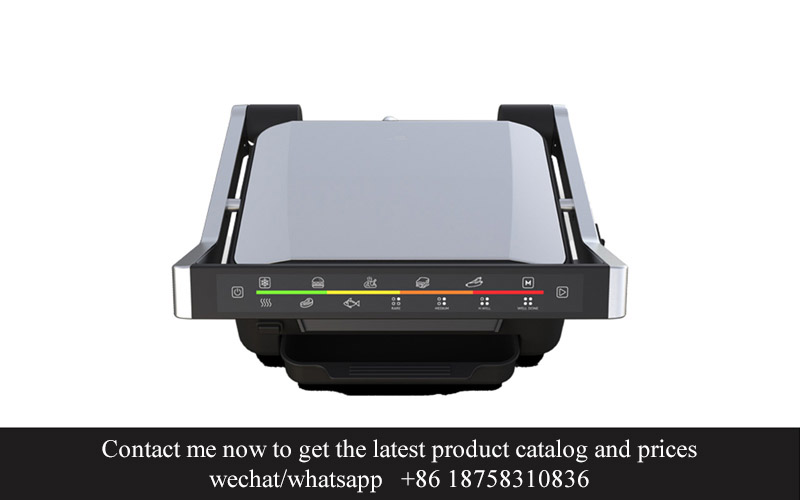
In the ever-evolving landscape of kitchen appliances, ODM (Original Design Manufacturing) juicers have emerged as a game-changer. They’re not just catching on; they’re becoming the preferred choice for health-conscious consumers and design enthusiasts alike. Let’s delve into the reasons behind this surge in popularity.
The demand for personalized and innovative products has been on the rise, and ODM juicers are perfectly tailored to meet this need. These appliances are not just about extracting juice; they’re a blend of functionality, aesthetics, and technological advancement. Consumers are increasingly seeking appliances that not only serve a purpose but also reflect their personal style and values.
One of the key factors driving the popularity of ODM juicers is the customization they offer. Unlike mass-produced appliances, ODM juicers can be designed to cater to specific market segments or individual preferences. Whether it’s a sleek, modern design for the urban professional or a rugged, vintage look for the eco-conscious consumer, ODM allows for a wide range of choices that resonate with different demographics.
Moreover, the innovation in design extends beyond aesthetics. ODM juicers often incorporate cutting-edge features that enhance the juicing experience. From advanced juicing mechanisms that maximize yield to smart technology that provides real-time feedback, these appliances are pushing the boundaries of what’s possible in kitchen gadgets.
In the health and wellness sector, the quality of juice extracted is paramount. ODM juicers are engineered to deliver the highest quality juice, preserving the nutrients and vitamins found in fruits and vegetables. This focus on health has become a significant driver in the market, as consumers are more aware of the benefits of fresh, unprocessed foods.
The market for ODM juicers is also being fueled by the growing trend of home cooking and baking. As people spend more time in their kitchens, they’re looking for appliances that not only streamline the process but also add a touch of sophistication to their culinary endeavors. ODM juicers offer this dual benefit, making them a staple in many modern kitchens.
Another factor contributing to the rise of ODM juicers is the global shift towards sustainability. Many consumers are looking for products that are not only functional but also environmentally friendly. ODM juicers often use sustainable materials and are designed for longevity, reducing the need for frequent replacements and minimizing waste.
The digital age has also played a role in the popularity of ODM juicers. With the advent of social media and online shopping, consumers are exposed to a plethora of design options and reviews. This has democratized the appliance market, allowing smaller, niche brands to compete with established players. ODM juicers, with their unique designs and functionalities, are capitalizing on this trend.
In terms of distribution, ODM juicers are often found in specialty stores and online marketplaces. This targeted approach ensures that they reach the right audience—those who value innovation and are willing to invest in high-quality appliances. The direct-to-consumer model also allows for a more personal interaction between the manufacturer and the customer, fostering brand loyalty.
The competitive landscape of the kitchen appliance market is also a driver for the growth of ODM juicers. As traditional appliance brands seek to differentiate themselves, they are increasingly turning to ODM partners to create exclusive products. This collaboration not only brings fresh ideas to the market but also ensures that these products are backed by the credibility and support of established brands.
The global market for ODM juicers is diverse, with different regions showing varying preferences. For instance, in North America and Europe, there’s a strong emphasis on health and sustainability, leading to a demand for juicers that are both nutrient-preserving and eco-friendly. In Asia, on the other hand, there’s a greater focus on functionality and affordability, with consumers seeking ODM juicers that offer great performance at a reasonable price.
In conclusion, the surge in popularity of ODM juicers can be attributed to a combination of factors, including customization, innovation, health consciousness, sustainability, and the digital transformation of consumer behavior. As the market continues to evolve, it’s clear that ODM juicers are not just a trend; they’re shaping the future of kitchen appliances.
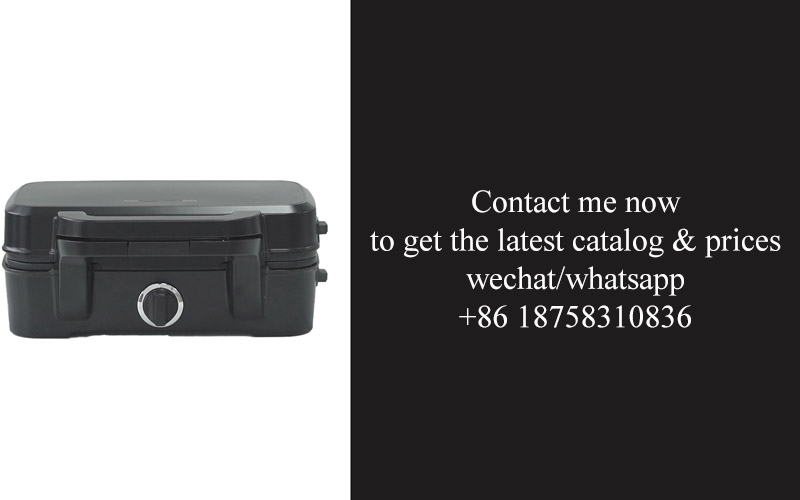
In today’s fast-paced world, the demand for healthy living has surged, leading to a significant rise in the popularity of juicers. The market is no longer just about extracting fresh juice; it’s about providing solutions that cater to the diverse needs of consumers. This shift has given rise to customer-centric design, a concept that has become the cornerstone of ODM juicer design services. Here’s how these services are reshaping the juicing experience:
The consumer’s journey with juicers starts with the desire for healthier lifestyles. They seek appliances that not only make juicing convenient but also enhance the overall experience. ODM juicer design services understand this need and focus on creating products that are not just functional but also a pleasure to use.
Customization is key in this customer-centric approach. Designers take into account the varying preferences of consumers, from the type of produce they use to the ease of cleaning the juicer. For instance, some users might prefer a juicer that can handle a variety of fruits and vegetables, while others might be looking for a model that’s particularly efficient with leafy greens.
Ease of use is another critical factor. Modern consumers are time-poor and value convenience. ODM juicers are designed with intuitive interfaces, user-friendly controls, and ergonomic features that make the juicing process as straightforward as possible. Features like automatic pulp ejection and easy-to-fill chutes are just a few examples of how design can enhance the user experience.
Safety is paramount in kitchen appliances, and ODM juicers are no exception. Designers ensure that all components are durable and safe, with non-slip bases and safety locks to prevent accidents. These considerations are particularly important for families with children, who might be more prone to misuse kitchen appliances.
The aesthetic appeal of a juicer cannot be underestimated. Consumers are not just looking for a tool; they’re seeking a statement piece for their kitchen. ODM juicer design services offer a range of styles, from sleek and modern to vintage and rustic, ensuring that there’s a juicer to match every kitchen decor.
Another aspect of customer-centric design is the sustainability factor. Consumers are increasingly aware of their carbon footprint and are looking for products that are eco-friendly. ODM juicers are designed with sustainable materials and energy-efficient features, appealing to the environmentally conscious consumer.
The health and wellness trend has also influenced the design of juicers. ODM services are incorporating features that allow for the extraction of nutrient-rich juice from a variety of ingredients, including nuts, seeds, and grains. This versatility means that juicers can be used to create not just fresh fruit and vegetable juices but also smoothies and other health elixirs.
Innovation in juicer design is not just about adding new features; it’s also about refining existing ones. ODM services are constantly looking for ways to improve the efficiency of juicers, ensuring that they extract the maximum amount of nutrients from produce while minimizing waste.
The integration of technology is another area where ODM juicer design services are making strides. Smart juicers that can be controlled via apps or voice commands are becoming more common, offering users the convenience of customizing their juicing experience remotely.
Finally, the packaging and branding of juicers play a significant role in customer satisfaction. ODM services work closely with brands to create packaging that not only protects the appliance during shipping but also communicates the brand’s values and the product’s unique selling points.
In essence, customer-centric design in ODM juicers is about listening to the needs of the consumer and translating those needs into innovative and functional products. By focusing on these aspects, ODM juicer design services are not just catching on in the market—they’re leading the charge in redefining the juicing experience.
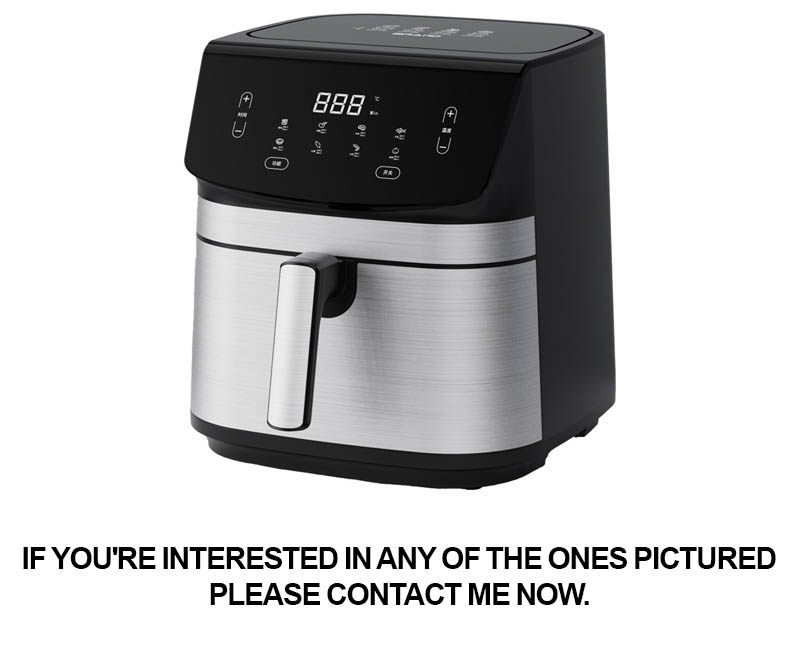
In the world of kitchen appliances, the quest for excellence is relentless. For those in the market for a juicer, the term ODM (Original Design Manufacturing) stands out as a beacon of quality and innovation. Here’s why the ODM advantage in juicer manufacturing is more than just a buzzword—it’s a commitment to delivering a product that stands the test of time.
The ODM process begins with a deep understanding of the market and the consumer. It’s not just about creating a product; it’s about crafting a solution that aligns with the customer’s lifestyle and needs. This approach ensures that each juicer is not just a tool, but a companion in the daily quest for health and vitality.
One of the key benefits of choosing an ODM juicer is the focus on quality. These manufacturers invest heavily in research and development to ensure that every aspect of the juicer, from its sturdy build to its efficient motor, meets the highest standards. This means that customers can trust that their ODM juicer is not only durable but also performs optimally, every time.
Customization is another hallmark of the ODM advantage. Manufacturers collaborate closely with clients to understand their specific requirements, whether it’s a particular design aesthetic or the inclusion of advanced features. This level of personalization is often not found in mass-produced goods, making ODM juicers a unique and tailored choice.
In terms of design, ODM juicers often lead the pack. They push the boundaries of what’s possible, incorporating sleek, modern aesthetics with cutting-edge technology. The result is a juicer that not only looks great on a countertop but also offers a seamless, intuitive user experience. The design is not just about aesthetics; it’s about making the juicing process as effortless as possible.
The materials used in ODM juicers are also a testament to the commitment to quality. High-grade stainless steel, durable plastics, and other premium materials are chosen for their longevity and safety. This means that ODM juicers are not only a long-term investment but also a health investment, as they are designed to handle a variety of fruits and vegetables without compromising on hygiene or performance.
Innovation is at the core of ODM juicers. These products are not just copies of existing models; they are the result of brainstorming sessions and testing phases that bring new ideas to life. From variable speed settings to automatic pulp ejection, ODM juicers are designed to offer solutions to common juicing challenges, such as difficulty with certain types of produce or the cleanup process after juicing.
The ODM advantage also extends to the supply chain. These manufacturers often have a direct relationship with suppliers, which means they can ensure a steady flow of quality components. This vertically integrated approach allows for greater control over the manufacturing process, from design to production, resulting in a more cohesive and reliable end product.
When it comes to after-sales service, ODM juicers shine. These manufacturers are dedicated to customer satisfaction, offering comprehensive support and easy-to-access customer service. Whether it’s a replacement part or assistance with troubleshooting, the ODM advantage includes a commitment to maintaining a positive customer experience even after the purchase.
The environmental impact is also a consideration in ODM juicers. Many manufacturers are now incorporating sustainable practices into their production process, from using recyclable materials to designing products that are easier to disassemble and recycle at the end of their life cycle. This focus on sustainability is a reflection of the ODM philosophy, which is to create not just products, but experiences that are mindful of the world around us.
In the competitive world of kitchen appliances, the ODM advantage is clear. It’s about creating a product that is not just functional but also a statement of quality and innovation. It’s about understanding the customer’s needs and delivering a solution that exceeds expectations. And it’s about building a relationship that lasts, through products that are designed to be reliable, efficient, and a joy to use. The ODM advantage in juicer manufacturing is more than just a promise—it’s a reality, and it’s changing the way we think about the juicing experience.
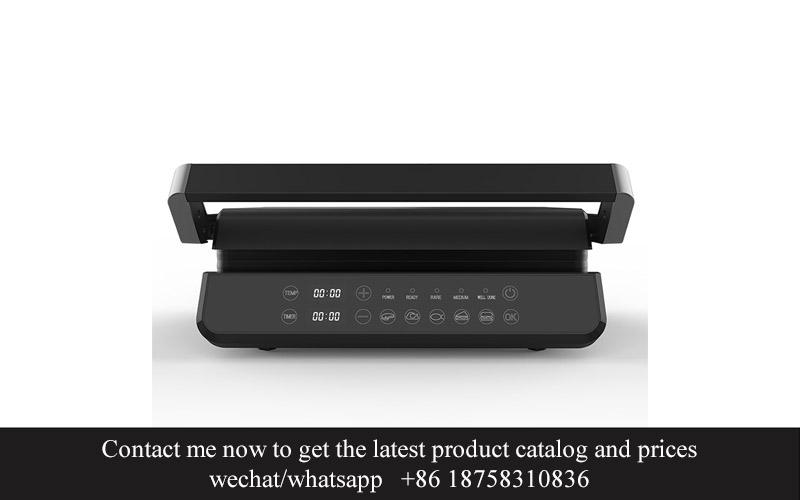
In the world of kitchen appliances, ODM (Original Design Manufacturing) has become a cornerstone for companies looking to stand out in a crowded market. Let’s delve into some case studies that showcase the success stories in ODM juicer design.
One such success story comes from EcoPure, a brand known for its eco-friendly approach to appliance design. Their ODM juicer, the EcoPure GreenGrip, was a game-changer. The design focused on sustainability, using recycled materials and energy-efficient components. The sleek, modern look appealed to environmentally conscious consumers, while the juicer’s performance was top-notch. This fusion of eco-consciousness and functionality made the GreenGrip a hit among health enthusiasts and environmentally aware shoppers.
Another compelling case study is the partnership between Global Appliances and their ODM juicer, the SmartSqueeze Pro. This juicer was designed with the busy professional in mind, featuring a compact design and smart technology that allowed users to monitor their juicing sessions through a smartphone app. The case study highlighted how the ODM process allowed Global Appliances to create a product that seamlessly integrated into the customer’s lifestyle, offering convenience and performance.
The Story of Fusion Juices is another shining example of ODM success. They approached a well-known design firm for a unique juicer that would cater to the needs of both the home user and the commercial market. The result was the Fusion Elite, a juicer that could handle large batches with ease, yet still be compact enough for countertop use at home. The design was not just about performance; it was also about aesthetics, with a futuristic look that caught the eye of consumers looking for a statement piece in their kitchen.
One cannot ignore the success of the VintageVibe brand, which has made a name for itself with its ODM juicers. The VintageVibe Classic was designed with nostalgia in mind, borrowing from the classic designs of the 1950s and early 1960s. The retro aesthetic appealed to a demographic that values craftsmanship and vintage charm. The juicer’s durability and efficiency were equally impressive, making it a sought-after item for collectors and juicing enthusiasts alike.
In the realm of health-focused appliances, the ZenLife brand’s ODM juicer, the ZenLife Vitality, has become a standout product. Designed by renowned industrial designer Jane Smith, the ZenLife Vitality was crafted to provide the ultimate juicing experience. The case study detailed how Smith’s expertise in ergonomics and ease of use led to a juicer that was not only visually stunning but also incredibly intuitive. The ZenLife Vitality’s innovative features, such as an automatic pulp ejection system, have set new standards in the juicer market.
The journey of FreshTech, a company specializing in high-end juicers, also serves as an excellent case study. Their ODM juicer, the FreshTech Elite Series, was designed to cater to the discerning tastes of the gourmet market. The case study delved into the meticulous attention to detail in the design process, including the use of premium materials and innovative technologies that ensured every drop of juice was as pure as possible. The result was a product that commanded a premium price but offered exceptional value for money.
The case of PureStream, a brand that prides itself on producing BPA-free juicers, is another success story in ODM design. Their ODM juicer, the PureStream ClearStream, was designed to address the growing concern about the health risks associated with plastic. The ClearStream was not only free of harmful chemicals but also featured a transparent design that allowed users to see the quality of their juice. The case study highlighted how PureStream leveraged ODM to create a product that resonated with the health-conscious consumer, leading to a significant increase in sales.
These case studies illustrate the power of ODM in juicer design. By collaborating with designers and engineers, companies have been able to bring to market unique, functional, and aesthetically pleasing products that not only meet but exceed consumer expectations. The success of these ODM juicers underscores the importance of innovation, quality, and a deep understanding of consumer needs in the kitchen appliance sector.
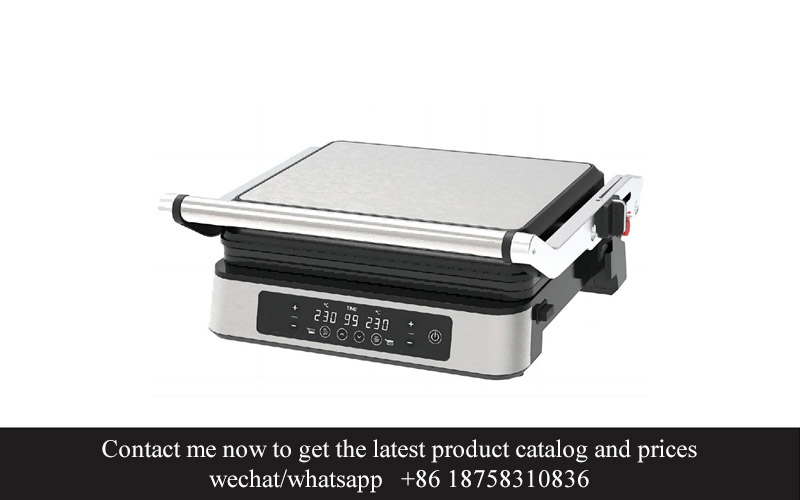
In the ever-evolving landscape of kitchen appliances, juicers have become more than just a tool for extracting the essence of fruits and vegetables. They’ve transformed into a symbol of innovation, style, and health-conscious living. As we delve into the future of juicing, several trends and predictions are shaping the industry, promising an exciting journey ahead.
The rise of health consciousness has propelled the demand for fresh, nutritious beverages, and juicers are at the forefront of this movement. Consumers are not just looking for any juicer; they’re seeking appliances that not only fulfill their health goals but also enhance their kitchen aesthetics and daily routines. Here are some key trends and predictions that are setting the stage for the future of juicing.
Smart Juicers: The integration of technology into everyday appliances is not new, but the next generation of juicers is expected to be smarter than ever. With features like Bluetooth connectivity, smart notifications, and even recipe recommendations, these juicers will become a part of the smart home ecosystem, offering a personalized juicing experience.
Aesthetics and Design: While functionality remains paramount, the visual appeal of juicers is becoming increasingly important. Brands are focusing on sleek, modern designs that complement kitchen decor. Expect to see more juicers that are not just efficient but also a stylish addition to any countertop.
High-Quality Materials: The materials used in juicer construction are a testament to the appliance’s longevity and performance. As consumers seek out healthier lifestyles, they also demand products that are built to last. High-quality stainless steel, BPA-free plastics, and durable glass are becoming standard in premium juicers.
Versatility: The one-size-fits-all approach is fading as consumers look for appliances that can handle a variety of tasks. Multi-functional juicers that can also make smoothies, ice creams, or even pasta are becoming popular. This versatility caters to those who want to maximize their kitchen appliance investments.
Environmentally Friendly Options: Sustainability is a growing concern, and the juicing industry is responding with eco-friendly options. This includes juicers made from recycled materials, energy-efficient designs, and even juicers that use less water and create less waste during the juicing process.
Customization and Personalization: The future of juicing may involve personalized appliance options. Imagine a juicer that learns your preferences and adjusts settings accordingly, or one that offers customization in terms of speed, pulp control, and even noise levels.
Health and Nutrient Retention: As the health benefits of juicing become more widely recognized, there’s a growing focus on nutrient retention. Juicers with advanced filtering systems and slower extraction methods are likely to become more prevalent, ensuring that the maximum amount of vitamins and minerals are preserved in every glass.
Global Market Expansion: The popularity of juicing is not confined to any one region. As more people across the globe embrace healthier lifestyles, the market for juicers is expected to expand. This will lead to greater diversity in design, catering to different cultural preferences and dietary needs.
Sustainability Initiatives: Companies are likely to invest more in sustainability initiatives, such as reducing carbon footprints, supporting local farmers, and using renewable energy sources. These efforts will not only benefit the environment but also resonate with consumers who are environmentally conscious.
Digital Marketing and Social Media: The future of juicing will also be influenced by digital marketing and social media. As more consumers turn to these platforms for product recommendations and inspiration, juicer brands will need to be active and engaging online to stay relevant.
In conclusion, the future of juicing is bright, with a focus on innovation, health, and sustainability. As the industry continues to evolve, consumers can look forward to a wide array of options that not only make healthy living easier but also more enjoyable. Whether it’s through smart technology, stylish designs, or eco-friendly practices, the juicing experience is poised to become even more exciting and beneficial in the years to come.
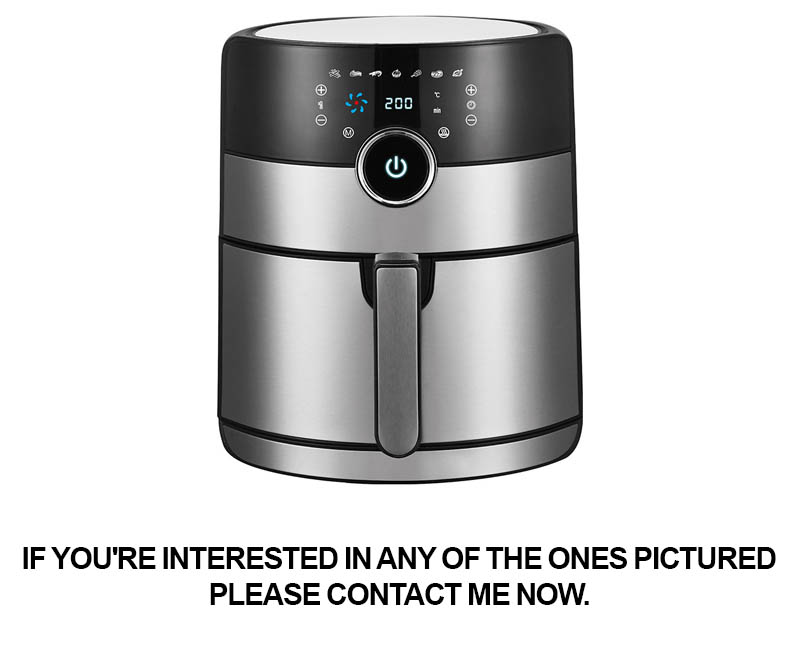
In the ever-evolving world of kitchen appliances, the ODM (Original Design Manufacturer) juicer design service has emerged as a beacon of innovation and quality. This service isn’t just about crafting a new juicer; it’s about understanding the pulse of the market and the desires of consumers, then translating those into cutting-edge, functional designs. The ODM process is a testament to the power of collaboration, where the expertise of designers meets the insights of manufacturers to create appliances that not only perform but also resonate with users. Let’s delve into the intricacies of this process and the fruits of its labor.
The ODM juicer design service begins with a deep dive into market research. Designers analyze consumer trends, identify gaps in the current market offerings, and anticipate future needs. This research is crucial in ensuring that the juicers they design are not just aesthetically pleasing but also practical and user-friendly. The design phase involves sketching, prototyping, and iterating, all with the goal of creating a product that stands out in a crowded marketplace.
One of the key advantages of the ODM process is the ability to customize. Each client has unique specifications and requirements, and the ODM service can tailor the design to meet these needs. Whether it’s a specific size, shape, or functionality, the ODM team works closely with the client to ensure that the final product aligns perfectly with their vision. This level of customization is often unattainable through off-the-shelf solutions, making the ODM service a preferred choice for many businesses.
Innovation is at the core of ODM juicer design. Designers push the boundaries of what’s possible, incorporating new technologies and materials that enhance performance and durability. For instance, some ODM designs incorporate advanced juicing mechanisms that extract more juice from fruits and vegetables, reducing waste and increasing yield. Others feature smart technology, such as touchscreens and Bluetooth connectivity, allowing users to control their juicer with ease and track their consumption.
The ODM process also emphasizes quality assurance. Before a design is finalized, it undergoes rigorous testing to ensure it meets the highest standards of performance and safety. This includes stress tests, durability tests, and safety certifications. The result is a juicer that not only looks great but also performs reliably, giving users peace of mind and confidence in their purchase.
One of the most compelling aspects of the ODM juicer design service is the opportunity it presents for brands to differentiate themselves. In a market saturated with similar products, a unique design can be the deciding factor in a consumer’s purchase decision. ODM allows brands to create a distinct identity and establish a competitive edge. By investing in custom-designed juicers, brands can communicate their commitment to quality and innovation, setting themselves apart from competitors.
The success stories of ODM juicer design are numerous. Take, for example, the case of a small startup that approached an ODM design service with a vision for a compact, portable juicer. The designers worked closely with the client to create a sleek, lightweight model that could be easily transported and stored. The result was a hit product that appealed to health-conscious consumers on the go. Another example is a well-known appliance brand that collaborated with an ODM service to develop a juicer with a unique, modern aesthetic. The design was so successful that it became a flagship product for the brand, boosting its reputation and sales.
As the demand for healthy living continues to rise, the role of the ODM juicer design service becomes even more significant. Consumers are looking for appliances that not only make juicing easier but also enhance their overall experience. This means incorporating features like intuitive interfaces, quiet operation, and even health tracking. The ODM service is well-positioned to meet these evolving needs, offering solutions that are both innovative and user-centric.
Looking ahead, the future of juicing is bright, and the ODM design service will play a pivotal role in shaping it. Trends like sustainability, smart technology, and health consciousness will continue to influence the design of juicers. We can expect to see more eco-friendly materials, energy-efficient designs, and appliances that integrate seamlessly into smart home ecosystems. The ODM service will need to stay ahead of these trends, continuously evolving its designs to meet the changing demands of the market.
In conclusion, the ODM juicer design service is more than just a process; it’s a journey of collaboration, innovation, and quality. It’s about creating appliances that not only fulfill a need but also inspire a lifestyle. As the market for juicers grows, so too will the importance of the ODM service in driving its evolution. By staying attuned to consumer needs and embracing new technologies, the ODM service will continue to be the go-to choice for brands and consumers alike, ensuring that every squeeze yields the best possible juice.